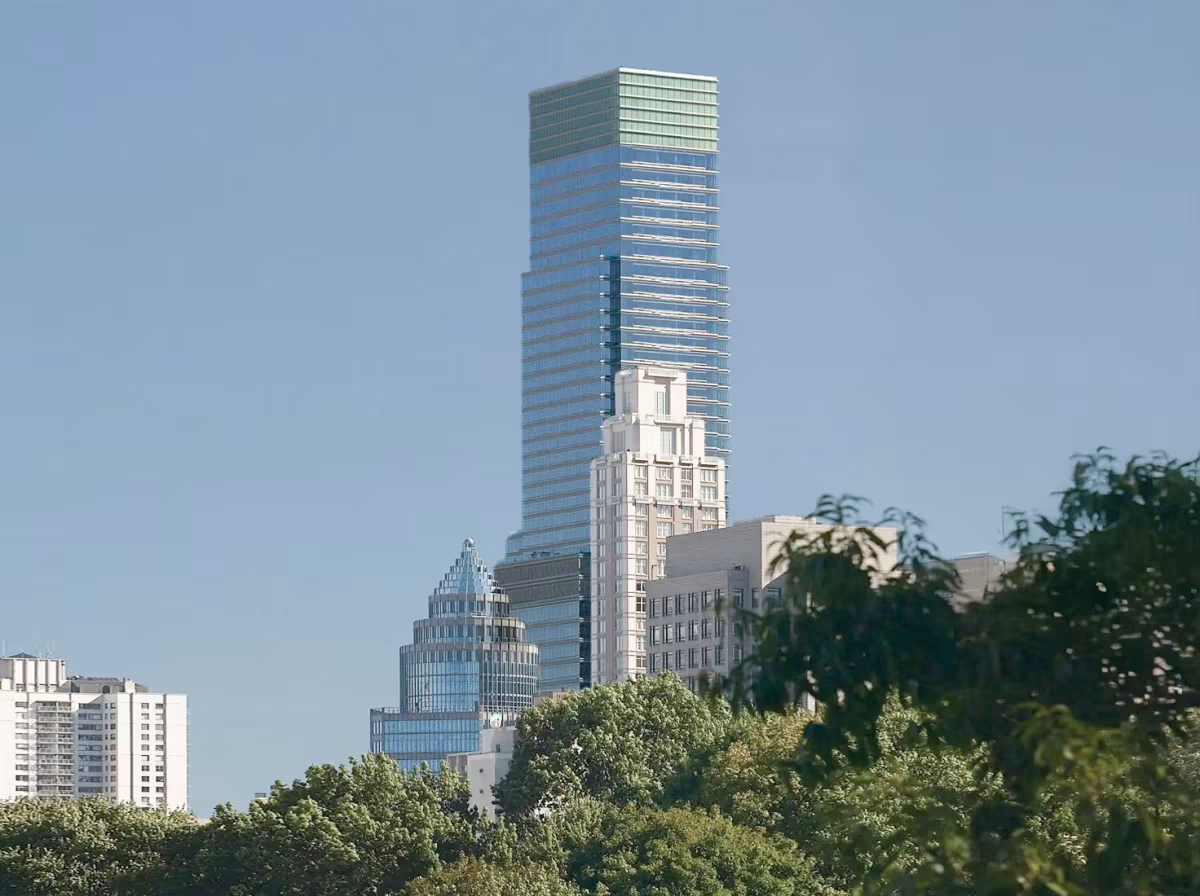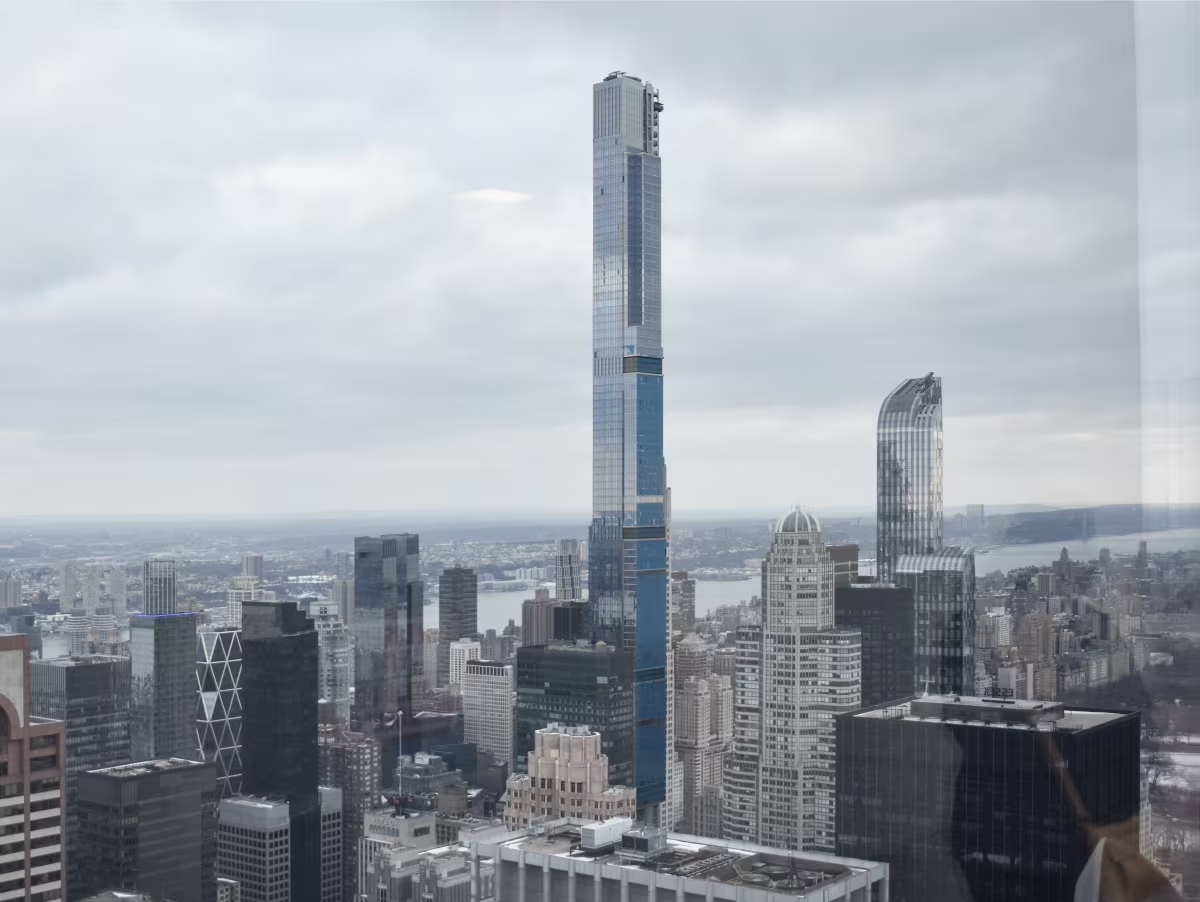731 Lexington Avenue Building vs Central Park Tower


Comparing the 731 Lexington Avenue Building and the Central Park Tower is interesting because they both rise in New York, NY, yet they were conceived by two different design teams, César Pelli & Associates and Adrian Smith + Gordon Gill Architecture, and were completed at different points in time. They were finished more than a decade apart.
This contrast within the same city allows us to see how different creative minds interpreted the evolving needs of New York across time.
Let's take a closer look!
Height & Size
The Central Park Tower is clearly the larger tower of the two, both in terms of height and number of floors. It rises to 1549ft (472m) with 98 floors above ground, while the 731 Lexington Avenue Building reaches 814ft (248m) with 54 floors above ground.
Despite being taller and having more floors, Central Park Tower has less total built-up area than 731 Lexington Avenue Building.
Of course, each project may have faced different briefs or regulatory constraints, which we don't really know about and could also explain the outcome.
Architectural Style
Both the 731 Lexington Avenue Building and the Central Park Tower were designed in line with the aesthetic conventions of the Contemporary style.
At the time, this style was at the height of its popularity. So both César Pelli & Associates and Adrian Smith + Gordon Gill Architecture followed what was in many ways expected of them, producing designs that fit comfortably within contemporary architectural norms, rather than breaking with convention.
Uses
The 731 Lexington Avenue Building follows a mixed-use model, combining residential, retail and commercial. In contrast, the Central Park Tower has remained primarily residential.
In terms of capacity, the 731 Lexington Avenue Building offers 105 apartments, while the Central Park Tower provides 179 units.
Structure & Facade
Both the 731 Lexington Avenue Building and the Central Park Tower rely on a Frame structural system.
A frame structure uses a grid of columns and beams to carry the building's loads. This frees the walls from structural duties, allowing for flexible floor plans and larger windows.
They also employ the same type of facade, a Curtain Wall facade.
A curtain wall is a non-load-bearing facade hung from the structural frame. It is anchored to floor slabs and transfers only its own weight and wind loads, allowing for sleek, glassy exteriors.
| 731 Lexington Avenue Building | Central Park Tower | |
|---|---|---|
| César Pelli & Associates | Architect | Adrian Smith + Gordon Gill Architecture |
| 1998 | Design Started | 2010 |
| 2001 | Design Ended | 2014 |
| 2001 | Construction Started | 2014 |
| 2005 | Year Completed | 2020 |
| Contemporary | Architectural Style | Contemporary |
| Mixed | Current Use | Residential |
| 54 | Floors Above Ground | 98 |
| 3 | Floors Below Ground | 4 |
| 237 | Last Floor Height | 432 |
| 248 m | Height (m) | 472 m |
| 130000 | Built-up Area (m²) | 119409 |
| 29 | Number of Elevators | 11 |
| 105 | Residential Units | 179 |
| Frame | Structure Type | Frame |
| Steel And Concrete | Vertical Structure Material | Reinforced Concrete |
| Poured Concrete Over Metal Decking | Horizontal Structure Material | Poured Concrete Over Metal Decking |
| No | Facade Structural? | No |
| Glass, Steel | Main Facade Material | Aluminum, Glass |
| Bovis Lend Lease Ltd. | Main Contractor | Lendlease |
| Vornado Realty Trust | Developer | Extell Development Company |
| Otis Elevator Company | Elevator Company | Otis Elevator Company |
| Flack + Kurz | MEP Engineer | AKF Group |
| Thornton Tomasetti | Structural Engineer | WSP |
| Larson Engineering | Facade Consultant | James Carpenter Design Associates And Permasteelisa Group |
| Jacques Grange | Interior Designer | Rottet Studio |
| NY | State | NY |
| New York | City | New York |
| 731 Lexington Avenue | Address | 225 West 57th Street |